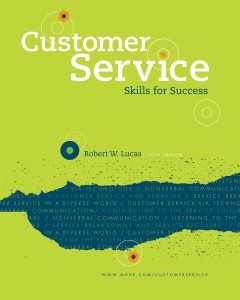Effective Listening Tips for Customer Service Representatives
Active listening is a skill that has to be learned and developed over time. As a customer service representative, you must continually practice your listening skills in order to deliver good customer service. Many people believe they are doing so, when in fact, they are only hearing the words (which is a passive physiological process in the body). To deliver excellent customer service, you must actively listen to get what customers are actually saying verbally and nonverbally.
Here are four tips for actively listening to your customers that can enhance the quality of service that you deliver.
- Stop doing other tasks and focus on what your customers are saying in order to increase your listening efficiency. Ask clarifying questions where appropriate to ensure that you ensure that you received the message they intended.
- Take time to slow down and actively listen to customers in order to make them feel important and allow you to better identify and meet their needs. This is important because many people spend time thinking about what they will say next rather than listening to what is being said. If you do this, your customer-provider relationship could suffer.
- Do your best to listen well so that you can get at the customer’s meaning or need. Don’t rush a customer who seems to be processing information and forming opinions or making a decision. This is especially important after you have presented product information and have asked for a buying decision. Answer questions, provide additional information requested but don’t push. Doing so could frustrate, anger, and ultimately alienate the customer. You could end up with a complaint or lost customer.
- In dealings with customers, try to avoid subjective opinions or judgments. If you have a preconceived idea about customers, their concerns or questions, the environment, or anything related to the customers, you could mishandle the situation. Listen openly and avoid making assumptions. Allow customers to describe their needs, wants, or concerns in their own words, and then analyze them fairly before taking appropriate action.
For additional suggestions and strategies for delivering exceptions customer service, get a copy of the book Customer Service: Skills for Success.
About Robert C. Lucas
Bob Lucas has been a trainer, presenter, customer service expert, and adult educator for over four decades. He has written hundreds of articles on training, writing, self-publishing, and workplace learning skills and issues. He is also an award-winning author who has written thirty-seven books on topics such as, writing, relationships, customer service, brain-based learning, and creative training strategies, interpersonal communication, diversity, and supervisory skills. Additionally, he has contributed articles, chapters, and activities to eighteen compilation books. Bob retired from the U.S. Marine Corps in 1991 after twenty-two years of active and reserve service.
Make Money Writing Books: Proven Profit Making Strategies for Authors by Robert W. Lucas at Amazon.com.
The key to successfully making money as an author and/or self-publisher is to brand yourself and your company and to make yourself and your book(s) a household name. Part of this is face-to-face interaction with people at trade shows, library events, book readings, book store signings, blogging or guest blogging on a topic related to their book(s). Another strategy involves writing articles and other materials that show up online and are found when people search for a given topic related to a topic about which the author has written.
If you need help building an author platform, branding yourself and your book(s) or generating recognition for what you do, Make Money Writing Books will help. Bob’s popular book addresses a multitude of ideas and strategies that you can use to help sell more books and create residual and passive income streams. The tips outlined in the book are focused to help authors but apply to virtually any professional trying to increase personal and product recognition and visibility.


